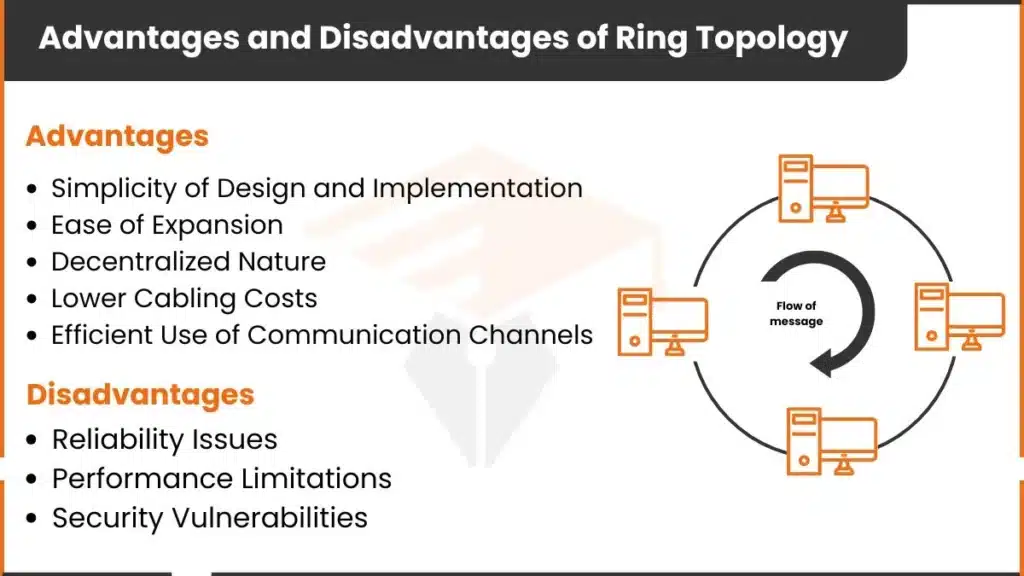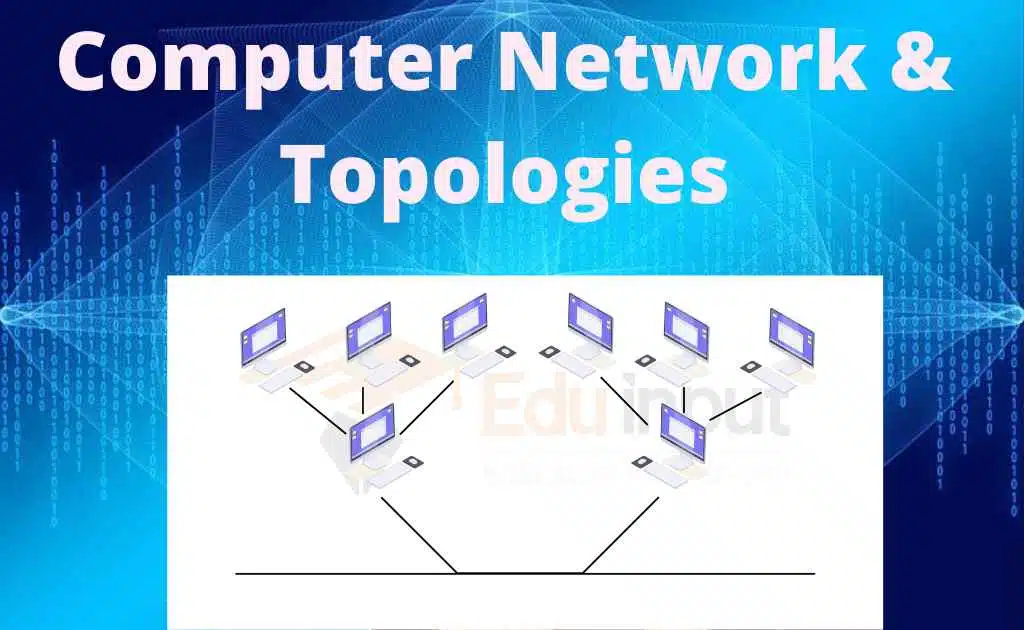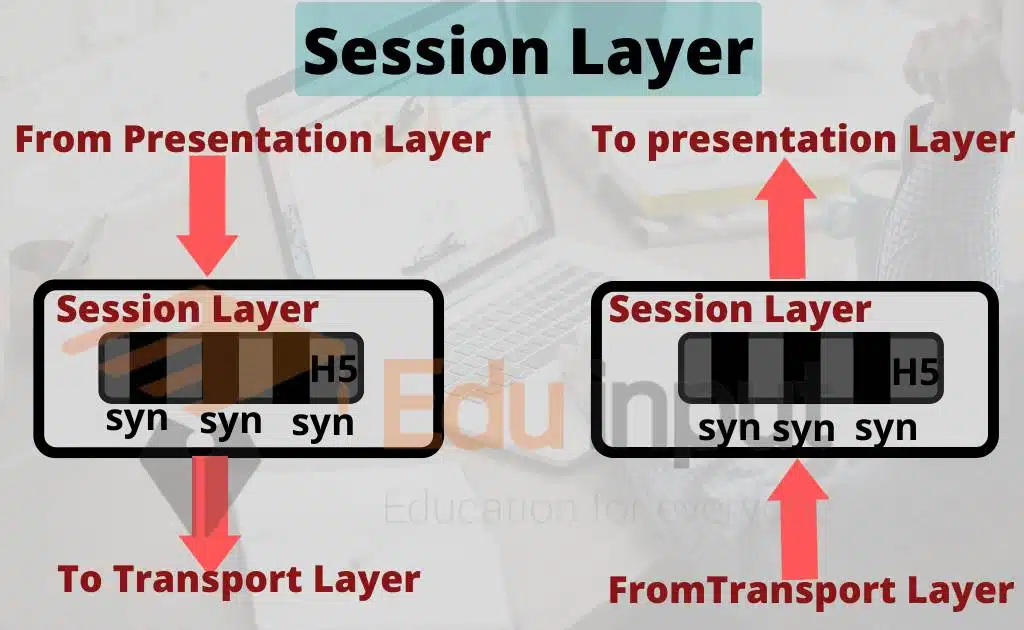Advantages and Disadvantages of Ring Topology
One main advantage of ring topology is its simple setup and cost-effectiveness. It requires less cabling than other network designs. However, it has some notable disadvantages as well. The primary drawback is its vulnerability to single points of failure. If one device goes down, it can disrupt the entire network.

Advantages of Ring Topology
The following are the benefits of ring topology
1. Simplicity of Design and Implementation
The design of ring topology is straightforward. Each device connects to its neighboring devices on either side. This structure is easy to understand and set up, making it useful for beginners.
Because of this simple design, network administrators can set up the network quickly. Each device is part of a clear path, and data flows in one direction. This simplicity can make ring topology a practical choice for small to medium-sized networks.
2. Ease of Expansion
Adding more devices to a ring topology network is simple. New devices can be inserted between two existing devices without major changes to the network. This ease of expansion makes ring topology flexible. If a network grows or new devices are added, the process remains manageable. There’s no need to redesign the entire setup, which can save time and effort.
3. Decentralized Nature
In a ring topology, there is no central device or hub. Each device plays an equal role in the network. This decentralized design means the network does not rely on a single device to control data flow. If one device stops working temporarily, it may slow down the network, but it won’t completely stop it. This feature is an advantage in settings where each device needs to have equal access to data.
4. Lower Cabling Costs Compared to Other Topologies
Compared to other setups, ring topology usually requires less cabling. In a star topology, each device needs a separate connection to a central hub. But in ring topology, each device only connects to two others. This reduces the cost of cables and installation. In smaller networks, the savings on cabling can make ring topology a more affordable option.
5. Efficient Use of Communication Channels
Data travels in a single direction in a ring topology. This clear, one-way path avoids confusion or interference. Each device passes data to the next in an organized sequence, making the use of channels efficient. Because there’s only one path for data to travel, there are fewer delays. This efficiency can make ring topology a good choice for networks that don’t need high-speed connections.
Disadvantages of Ring Topology
Here are some drawbacks of ring topology:
1 . Reliability Issues
- Single Point of Failure
If one device fails, the entire network can be disrupted. Each device is like a link in a chain. So if one link breaks, the whole chain is affected. When a device stops working, data cannot continue to the next device. This issue makes ring topology less reliable than some other types of networks. - Difficulty Isolating Problems
In a ring topology, finding the exact location of a problem can be difficult. Since each device is connected in a loop. An issue with one device affects all others. Technicians may need to check each connection to find the source of the problem. This process can take time and may require disconnecting multiple devices. For networks where quick troubleshooting is important, this difficulty can be a challenge.
2. Performance Limitations
- Bandwidth Constraints as More Nodes Are Added
The more devices that are added to a ring topology, the slower the network may become. Each device has to handle data from every other device in the loop. With each new device, there is more “traffic” in the network. This can create bandwidth constraints, which means the network’s capacity is limited. - Higher Latency Due to Data Passing Through Multiple Nodes
Data has to pass through multiple devices to reach its destination in a ring topology. This creates latency, which is a delay in data transmission. For each device the data passes through, there is a small delay. If the network is large, the total delay can become noticeable. This higher latency can be an issue for tasks that need fast data transfer like video streaming or gaming.
3. Security Vulnerabilities
- Easier to Intercept Data
Since data passes through every device, it can be easier to intercept. Each device has access to the data as it travels through the network. This makes it possible for someone to “listen in” on the data. In high-security networks, this openness can be a risk. Sensitive data might be exposed as it moves through each device. - Potential for Malicious Nodes to Disrupt the Network
If one device in the network is compromised by malware or a malicious program, it can disrupt the entire ring. A malicious device can block or change data as it moves through the network. This can cause problems for all other devices in the ring. For networks with high-security needs, this risk can be a serious disadvantage of ring topology.
FAQs
Is it a ring main series or parallel?
A ring main is a series connection, as devices are connected in a loop, one after another.
Are ring circuits safe?
Ring circuits can be safe if properly installed and maintained
Where is the ring system used?
The ring system is used in LANs for data communication, electrical circuits for power distribution, fiber optic networks for redundancy, and utility networks like water or gas systems for continuous flow.







Leave a Reply